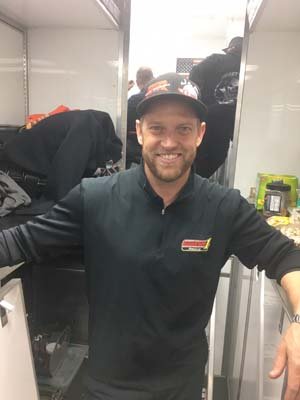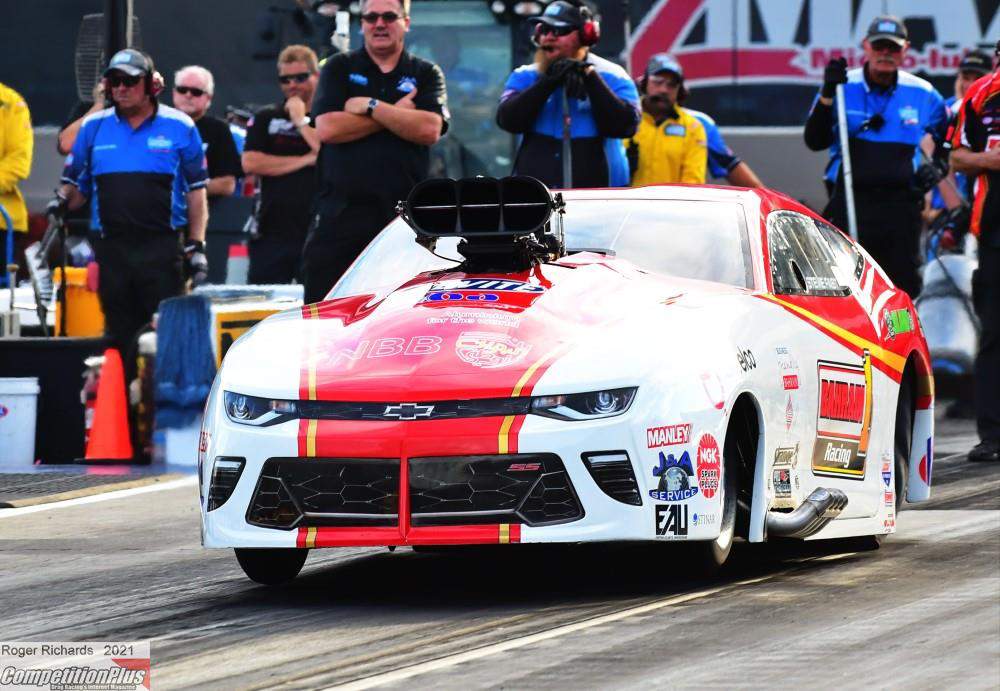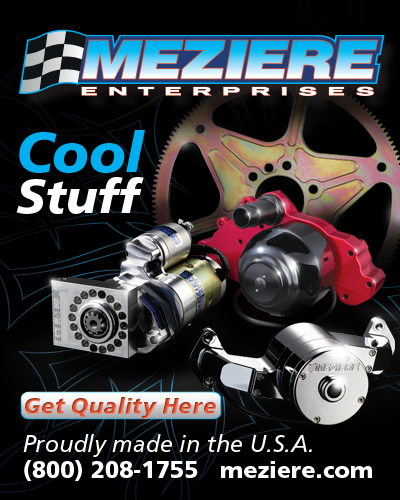PRO MOD'S PARITY: THE STEVIE FAST VIEWPOINT
 Stevie “Fast” Jackson can talk smack with the best of them. But when it comes to lobbying for rule changes, he’s content with letting others handle that aspect.
Stevie “Fast” Jackson can talk smack with the best of them. But when it comes to lobbying for rule changes, he’s content with letting others handle that aspect.
Oh, he’s opinionated, for sure.
Ask the two-time NHRA champion what he thinks about the centrifugal supercharged combination in Pro Modified and the NHRA tech department’s ability to police it, and he’ll not hesitate to speak his mind.
“I think to answer that question, you got to kind of get back to how they got in and at where they were to start with,” said Jackson, who runs a conventional supercharged combination. “They brought in a combination. They allowed some folks to make some exhibition runs to show them where the ET was. Obviously, the folks that made the exhibition runs didn’t really have the car sorted out because they only ran 5.84 at 230 [mph].
“I think they got a bunch of bad information. With any new combination, you have to chase development. So the roots blown combination, the nitrous combination, has been developed for 40 years. So there’s not a lot of large gains left to be had. Anytime you bring in a new combination where you don’t have any idea what it’s going to run because nobody’s ever run it, you’ve got a solid five, six, ten years, or even more of development. I think that NHRA did not chase the development side of it as fast as what they should have.
“It’s hard to police something when you slow them down .02, and they pick up a tenth by writing a check. I think it’s a lot better than what it was. I think we’ve made some steps to make it a lot better. Time will tell if it’s even yet or not. I don’t think any of us will know until we make some more runs, but it’s definitely applauding them finally. Better than what it was.”
For the most part, Pro Modified in NHRA combination is a three-power adder division, as the turbocharged cars are non-existent at the moment.
“There’s a lot of things in this class where we just continue to hit ourselves with a hammer. Like, you stick your finger on the counter, and you smack it with a hammer, and it hurts,” Jackson said. “And then you just do it again. I don’t understand the turbo combination. The whole problem with that combination is that they had way too big a turbos, and by the time you get it where you can race the combination close to anything else, it’s got a million restrictions on it that makes it impossible to race.
“The procharged combination will make 3,500 to 4,000 horsepower if it’s uncorked. Everybody else makes 2,800 to 3,000. So to make that thing run close to what we run, you end up with all these weird screwball rules that make it impossible to race. I think they’re seeing a little bit of that now. What they need to do, they got to put the right size [centrifugal] supercharger on it.
“I love diversity. I love having different power adders. We just got to do a better job at getting information. Either the people that are seeking the information or asking the wrong questions and are being told the wrong answers. I don’t know which one is happening, but if they don’t put a [centrifugal] supercharger on that thing that makes close this capable of sustaining 2800 to 3000 horsepower like the rest of the combinations, it’ll be nearly impossible to police it and run it side-by-side with other stuff.

Jackson believes the NHRA needs to be more proactive in protecting the racers from themselves.
“What I hate seeing is, I hate everybody spending money anytime you have to spend a bunch of money to be competitive,” Jackson explained. “Racers need to be protected from ourselves. If you allow us to do things to win, we will go broke until we can’t race anymore. It’s just the nature of the beast.”
Jackson believes, regardless of how much iconic nitrous racer Rickie Smith tries to say the nitrous combination is on its way out in Pro Modified, the bottle rockets have the most attractive combination in the class.
“You can see how dominant that combination was in Indy,” Jackson said. “Qualified number one. Jeffrey Barker, the nitrous car I work on, won the race, and it’s a light combination. You got to look at it like this, it takes a really good race track to run it, and it takes a specific air set for it to be dominant. But the thing makes the same power that my roots [blower] car does. It makes 2,800 to 3,000 horsepower, and it’s 200 pounds lighter. It has to be faster, almost 200 pounds lighter.
“I don’t think it’s dead at all. If I was building a car from scratch right now, and I had an open checkbook, I’d build a nitrous combination, 100%. The turbo combination and you’re going to see; we’re going to kick the s*** out of everybody with that nitrous car over here this weekend. Watch what I tell you.”
At least following Friday’s qualifying, Jackson’s words were prophetic as the three nitrous cars racing this weekend were one, two, and three in the qualifying order.
Jackson says the turbocharger combination, although there were none in Charlotte, can still be a player.
“We need to revamp that rule package and get us some turbo cars back,” Jackson explained. “We need turbo cars here racing. We need to take the enormous 9,000 horsepower capable turbos off. Put some normal size turbos on it, take that boost controller away, or figure out a different way to regulate it and let the guys come back and race.”
Jackson understands the NHRA’s concerns with the turbo combination.
“NHRA’s worried about speed with the turbo cars, and I agree with that. We don’t need cars going 270 out here, but I think we need that combination out here. The fans love it when there’s different power adders, and it is really hard to police parity and different atmospheric conditions with different power adders. I mean, nobody’s going to get it right. NHRA’s not going to get it right. If you let me do it, I couldn’t get it right.”





































